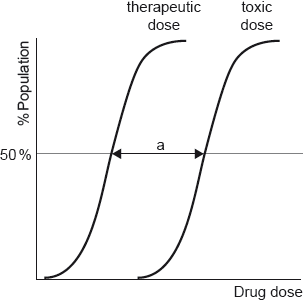| Date | May 2019 | Marks available | 1 | Reference code | 19M.3.hl.TZ1.22 |
| Level | HL | Paper | 3 | Time zone | TZ1 |
| Command term | Suggest | Question number | 22 | Adapted from | N/A |
Question
This question is about antiviral drugs.
Oseltamivir, used for the treatment of severe flu, is inactive until converted in the liver to its active carboxylate form.
Draw a circle around the functional group that can be converted to the carboxylate by hydrolysis.
The resulting active metabolite of oseltamivir can be detected by mass spectrometry (MS) analysis.
Deduce the mass of the expected carboxylate ion.
Mr oseltamivir = 312
Suggest a reason for using a phosphate salt of oseltamivir in oral tablets.
Anti-HIV drugs, such as zidovudine, often become less effective over time.
Explain the development of resistant virus strains in the presence of antiviral drugs.
Markscheme
[✔]
Note: Accept circles that include the alkyl side chain.
283 [✔]
more soluble «in water» [✔]
viruses undergo «rapid» mutation [✔]
mutation causes a change in viral protein
OR
drug no longer binds to virus [✔]
Note: Accept “rapid reproduction «allows resistant viruses to multiply»”.
Examiners report
Required candidates to identify the functional group in a diagram of the structure of oseltamivir that can be converted to a carboxylate by hydrolysis. This was very challenging with many varied parts of the structure circled. Many circled the amide group. Candidates who selected the ester had to be careful to not include the ring structure as well.
The challenge continued where the expected mass of the carboxylate ion was required. Some candidates chose values that exceeded the molar mass of oseltamivir itself, and some chose 45. There were very few correct answers.
Many candidates referred correctly to increased solubility of the salt in water while some mentioned bioavailability but did not realize that a salt will also form in the stomach.
Most candidates scored the first marking point when explaining the development of resistant virus strains but almost no-one scored the second mark. Many candidates were confused between bacteria and viruses and gave explanations about bacterial resistance and natural selection.


